The Vital Role of Physical Therapy in Sports Injury Prevention
Athletes face constant physical demands that predispose them to injuries, with the risk of recurrence posing a significant challenge. Physical therapy has become an indispensable aspect of modern athletic care, offering not only rehabilitation but also effective strategies for preventing re-injury. This article explores how specialized physical therapy optimizes recovery, strengthens performance, and equips athletes with the tools needed to maintain long-term physical health and resilience.
<!-- VIDEO:eyJsaW5rIjoiaHR0cHM6Ly93d3cueW91dHViZS5jb20vd2F0Y2g/dj1RUEZJcllBY2dxZyIsImltYWdlVXJsIjoiZGF0YTppbWFnZS9qcGVnO2Jhc2U2NCwvOWovNEFBUVNrWkpSZ0FCQVFBQUFRQUJBQUQvMndDRUFBa0dCd2dIQmdrSUJ3Z0tDZ2tMRFJZUERRd01EUnNVRlJBV0lCMGlJaUFkSHg4a0tEUXNKQ1l4Sng4ZkxUMHRNVFUzT2pvNkl5cy9SRDg0UXpRNU9qY0JDZ29LRFF3TkdnOFBHamNsSHlVM056YzNOemMzTnpjM056YzNOemMzTnpjM056YzNOemMzTnpjM056YzNOemMzTnpjM056YzNOemMzTnpjM056YzNOLy9BQUJFSUFGTUFsQU1CSWdBQ0VRRURFUUgveEFBY0FBQUJCUUVCQVFBQUFBQUFBQUFBQUFBQUF3UUZCZ2NCQWdqL3hBQThFQUFCQXdNREFRVUdBd1lGQlFBQUFBQUJBZ01FQUFVUkJoSWhNUk1pUVZGaEJ4UnhnWkdoRlNNeVFySEIwZUh3SkZKaWNwTVdGek0wZ3YvRUFCa0JBUUFEQVFFQUFBQUFBQUFBQUFBQUFBQUJBZ01FQmYvRUFDVVJBQUlDQVFNRUF3QURBQUFBQUFBQUFBQUJBaEVERWlFeEJCTXlVU0pCWVJTaHNmL2FBQXdEQVFBQ0VRTVJBRDhBMWEvRExEV2VnV1NmcFRCcUU2dHBLd0VnS3p0U0VnL3NrODU4ZVB2VWhmRCtRMlBOWEdmUHIvQ21xSk1kU0cxTzdndHNra2IxRG5hcnpKOFFLM2kybzdISmtTZVIySlc5b3QzTnNLQUNrcUlPT25ROGlyRlVEQ2REbHpiV0FjS0pDYzV5UmduUEpOVDFVeThtdUNxZEJYYTU2R2pBem56ck0yUFFvb1BQRkZBRkZGRkFGRkZKeWxPSWpQTFpTbFRxVzFGQVYwS3NjWm9DaCswTDJseGRNTFZBdHphSmx6R08wU1Nka2NFY2JzZFQvcEI4YytWWlVQYTVyTVBoZnYwWXA2bEFqSng4UE9xZzM3L2ZiaTRza3VTWkxxbkZxVndOeE9TZnZWN3NIcy9aZlVqOFJtNzhqSlN5am9malZKelVlVFNHS1UrQzlhSTlxcUxxOHpCMUV5eERrdWR4dDlDOE51THorbkI2SDVrVnBnSUl5T1JXRjM3UVZyaTI5eHkxSWNibHNBS2FVcHdxQktlZWhyVk5GWEZkd3RMYTNWWlZnSDdVaGtVK0JreFN4OGxnb29vcTVtRkZGRkFNN295dzh5Z1NIMHNwQ3VDb2daUGx6VEpOdmk5ajJvbmd0RGdyM0pLUWZMTk83eWxvd1ZyZGI3UXQ5NUE1L1YwR2NlSFBOUlV5RVdMSkZRVzNDcnRBNHM0enR5UDJoNkRBK1ZhUmJxck1weFRkdEQxaU5DaXZ0eURQYkp3U25ldElDdkRpcEZFbGdsQ08zYTNyQUtVaFk3MmZMenFuaHR3QnRTbWxOZzVPNHQ3d2V2TzArSGg5NmRwUTE3dzRrd25sbDFTREhTa2JDRS93NHgvVEZKSnZsa1FhWENMS21aRlh1Q1pMQ3RvSk9IQWNBZFNhOGk0UWh4NzVHLzVrL3dBNnFYdXp1MHJXMnNJVWh3SklUenVDT2grdytaOWNPb2pMVGtDVWx4amZKUXdwYlN1eEFVakgrb2RUMHFIQklsVGIraXplK3hOdTczcGpabkc3dFU0ejlhWEJ5TWpwVlJ1RVVOc1JIRzJGSksyY3FVRThLVjVIeVByOFBMaXlXbEpSYm82VklLQ0VZMm5QSDE2ZkNvYW92R1Z1aDFSWGFLcVdPVjJpb3JVRjRidEVSS2prdlBLN05vWThmTStncUc2VmtwTnVrWVFxd3hyZDc5YzBPTFN4SXVMaUxja0pLZTBieVNUZzhnQVlIeTlhbXJSYzNtM3R6UWFlMlk3UnBsQ2lSbk9Na25HZURVcnFleXo3dlBnUDIxVWNOUlcrNTJ6bUNwV2NxKzJLYTIrZkRERTlUTWYvQUJrZmVoYUVjOThaSEdPdk5jczNlNTZlS0duWkQrYWJyTmx4MHhrNGh1SjNaU3NKOFA4QWFTZnFLc0doaVkwbVJEemtJUEh3OFB0VUJiSnhSYW1lSFdTeUNsVGpnMmhXUFRyNTFMNlJkQzc0OFU5RkNyWVhVcU11cVMwV1h3MFVVVjBuQUZGRkZBVXIyc1g2NGFkMDNHbVd1YUlUaTV6YlMzeXlsM2EyUXJQZElPZWdQbnhWRWU5b0dwRTZmdWowVzhwbHg0ODZPekd2U2JjRysxU3NLM3A3TlNjZDNBNkRQMUZhRjdTbTdTdXpSSEwyNU5hanRUbTNrcWhzOW9vclFsUkFVTUhDY1o1cUYxRHFuU21yN1BIUzlLdVRNWkU1aGJicUlwVHZjSlZ0QUtoZ2pJT2NkS0FnWS90QjFJM1k3dzR4T2F1VGFKa2VMQXV6a0hzQXBUbWQrVy9FcHgvUE9hdU9pcnBmVzlWWHJUTi91RFZ5WEJhWmVhbUlqaGxSQ3hrcEtVOGVJeC9lSzlxQm5Sa0k2cXQ5d20zSnR0MmN3L0laWmEvOWFTNENwSzJpQm5KeHoxOHFVMDVmZE1hYTkrdkVtZGZwazJZODFIZGxUNGkrMFdjS0tFSkdCa2R3L2Iwb0JwYXRZYXBWcTltSmQ3bkdnUE96eXliTk9obHBDbWM0Q21ud0R2VjVaSXllbWNpb3JUL3REMUpKdk1Ca1h0TnhrdlhQM2Q2MGkyZ0ZERzdsenRVZ2RQdDFQR2FtOU9XSFNGeFZKdWNPOVhRMjJ6U3pQZHRjaFd4RVZ3QXEzRktraFFUZ0hIUGdlZXRUZWdMeHBtMTZNdVUrMFRwY2kyeEpManNoeDlyRGlWS0NTZTZBTWprVUJYV05aNnBMVVhVemx3akt0VW04KzRHMWlNTzYzdUkzQno5UlZ4L2ZTbzJIci9VeXI4V0dieUprbjhZWEZSWi93MGZtTUJYS3UxU0JqQStZeGswNnRxTkN2VG5wTGQ0dlNZRUpadkNiUSsycERXUWYxcEJUbFFIbG42ODBwSlhvaTFpSXI4WXVxWkRjMFhwTWxtTnVWR0R3VDNYTUo0U3J1OTA4L1dnSlNRNXJiL3VFZE5ONnZRaHRjSXprdS9oYkoycDNsSWJ4NC9ITk1GYXcxVXhyTlVTNDNPTmJsS3VKWll0VTZFVU5QeDg4TFJJQU9WSDFJR2ZIOW1wZTZhbjBwYnRldDN0K1RjbHpUQ0VScERFVlMyWFVLdzRGSVVCM2ozaDBOTHhQWnhaTG10cTVNejdxbTF5NUtibCtHTFdFdGRxUm5KU1JrZGVSblBobWdORE5VTFhVajNxNk5SRW51eDBaVjZLVnorN0ZKKzBIMmtNNmVtcHN0b2FSTHZUcFNDRmYrT1Bub1Y0NUp4enQ4dVNmTm0wNkZXNlJjN2k1bDUwRnhTc2VYT2Z0OUt6eVNwVWI0SS9LeFpEelVDR2gyVWNqY01aR2RvL2dCV09Tcmw3cGU1NFlLbW9yN3Fpa0pjT1Vnbmc1UE5jMW5xQjYvd0F0b01xMnhZL0xRNkVxL3dBMzh2blVXaDVFeHh0TndKYklHTzFRTTUrSS9sVkZqMnMxbG50MGk5NlpuZHVwS0hwWGJ2SlVWSlRsUzFEMTY3UVBVQVZiZEYzNjAyKzl1d0x0TGFpVEJqWjJxc0lYa0FqQ3p4bmtjSEI4czFSN1plYkZwKzNxYmlLTW1RcmtodHNwQ2o0WlVmNi9DcWxPa3VUcGI4cVJ5NjhvcVZ4eDhQZ09ueXBqVDFObGM4MUtLVjduMXgxR1IwTkZmTUduZGE2aTA0bExkc3VDdmR4MGpTQjJqUStBUEtmL0FKSXJZUFo1N1IydFM1aFhSdHFKY3h5a05rOW0rUEVwenlDUEVaUEhPZXVOemxML0FFVVVVQXp2RGEzYlBQYmFTcFMxeG5FcFNucW9sSndLeTJmcDI4U1BaTHBtMHBoVFVUR1pyWmZiYlFRNnluZTVsWHBnRUhQd3JTYnM4K2lWSGFqdWx2dE1KOU1rZ1pxTUUrYUlpMzFTVDNVSVVFZ0U1S2tiZ09uSGxrOVRWOU8zSm04bTlVWmZxRFJsN2l2YW1qeFdMMWNrTG13RnN5M0NYSDNrcFN2Y29MeHlVNXhudzRxV3ZFQzhYcXdXYTJNVzdWS0ZRNzB5NnVYY3lGdmhDdCtWaFF6d2pqcjB5SzBBeUpvbSs3Q1VvcUtnbmNVWTUrSGpYaE11YXBBVUphaGwwSUNWSUlPQ3RLTTRJNDVVT0thUDBoWkwralBITEpxR0ZwVFZWdVJiYmxLdjEwdVNJems5U1NwTWlQazdYTTlBbmFGSlBsdkh5OG8wNXFTMXAxVGJQd010eHJuWjIreFJDVXA1b090Z0lDZDJCM2xEY1Q4cTBoVDA0eTBSaktVU3JCQktPbmowNjU0L2RYbHVWT1cyaFlsa2JudXlBVW5hUnpqY2ZMbndwby9SM2Z3cUQyZ3BLTkZ2M0NSSnVWd3ZQNEo3ckhpdWdma2JraktFcEF6a2RPYWc3dFlyOUVUR1hiN0RkbVpybHJqc3BrUUZwVzIrdExhVWxFcHBmQUFPUjhoV2xtYk0ydks5OVgrVXBJMmxzZ25QeDZZNStsZTJuNTdqYktoTFVPMVdFZ0ZQVEpVT3ZpZTZlUFVVMGJYWTd1OVVRVjl0VjJmdVBzK1c1Qnk1Q2R6TzkxYi9BQ21Ec1FEMDRDY2c0OEt1R29ia3ExNmV1VnpRbks0c1IxNUtWRHFVcEpBKzFSQW16Q2xKRXdoUzNPemJRb2JTdnZKVG5ucHlzY2RldEpYQXZ6R0g0VWw5TWlNODFoYVZKNFdoU1hDYy93REdvZlNtbGV5ZTQvUmdlakk4bTc2aGZ1TTFhM25jbFRqaXVTcHhSNVA3L3JXbDZuZUtOR1hCYVRoS21TaHZIa2U3OTgxWUxacGUyd24vQUhhREVZWTdpWEZkbTBycXJBK2ZVYytHSzdMdGtlWGJtbXBrZHAySytuaG81d1FNWitoNHJONFhLWEp2SHFZd3h0Vi9oOCtvanZPSTN0c3JVUE5LQ1FhUnhrYmlPN25COUQvZWEyZlVWa3NjQzJLa0dCRmFDU2xLbHFCR0U0UEdjOGYxcktaZ1liZEtscGNkYVVPOE4yRks0Y0NGRTQ2L29KT09Semc1cThvNlhSakNhbXJRd0hIV3ZhYWtVaTBsS1FwRGllNnJrUEpQZThQa09lTURQcFhXeGE4bENrUEhhU2Q0Y1NuSXlNY2NqcHU2ZGNDb0xrWXJ1OCtIalMwZVE3RWZhZmpPRnQxdFFXaGFUeUNPbFBKdjRlV25Dd3d0Q2xIOHBJZkN3QngrcnFjOWZ0VVNWZUhsUUgwdHBUVnJWMHNVYVc1Z0xXbkN3UEJRNmo2NW9yR3RJMzBRTFl0aHhlUHppVWdud0lIOGMwVkFONXZYYUpsUm5XMnlzdDRWZ0E0eUNEaW92WXNOdXBSRVVON1FhU1NTU2xPM2JnOGQ3b0Q0YzFNMzJCTm5zTW90OXdWQmNRNXVVdE9lUmdqSEJHZXZqeFRVMnk5SnRUVU5xOHBEeUFzS2tyYVVwYXNnN1NlOE9oUFR4d09mTzZrcTNSazhidHRNWnJVK3FZWlFqdUE3Z3JZU1R6NkhIQXJ5Mmw1dHBDUGQxS0tIRXEzWUl5QXRLOFl4L21UMTllbEM5UGFoV0NEcWQxSktFcHlsdFF3UWtKS2dOM2pnOGNqS2llb0ZLUFdIVUtrdDlqcVp4SzB0YkZGVE9VcVh2Q2d2QUlQaHRJempCTlRyWG9qdHk5bmhKbEI1RHhqckswREFIUFBCR2M0OWZ0WEVwZUVkTENvWVdnRUVrcFZsWGYzRUhqb2VsVFZoZ3pvRE1oRnh1UzU2M0h5NDJ0YWR2Wm8ycEd6MUFJVWMrdnpxVHpUV3ZRN2N2WlUzTzNYdkh1N2dTc0lHVGtxRzBZR1RqazBOTGxOS2FIdTZsSmJVbFFCM0RvcFo4dU03OGZLcmI4SzVUV3VLQ3h0TzdLa2xMcVVJL3dBS3RTMjNPMGJXdktpbnZKVnp4eWNvSFBIVTE0Zm5OdE9QTnJEVFJjWTdIWTQ1M2tBNTczSTUvVXJ5NjFiOXFkMjREbkdNMWhlc3BCZDFwZE8wQjNoOElBUGtFcEErd0IrZFZsa1MralRIaGxKMXFORUZ4QmtKZWJVamR0YkNoMitjN1ZKUEhIQU8zR1BXa1ZTRU5zTnBlZGJRaG9FQlJYZ2NuUGpWTWlrTkVEUEFGUXZ0RXVMZjRJSTJRVlBQSUFIb0RuK0ZaeDZuNVZwTnNuUmZCdHkvb3NQdEduc2Y5S1NmZFpiU25lMGF4MmJvS3NieG5vYXlFdUtVRjdpU1ZkU2VUVFZBQ0hDQUFNODhDbFFhMG5MVTdNTWNOQ285QStCcjJENjBtYTVrNXFDNHVDUEdteFA1eS9qU3FmSFBoVTNwdXlRNWtoMU54RHBXbDBwTFljd1BxT2Z2VlpTVVZiTFFnNXVrUXplNHA3b0orQXpSV3B0eFdJaVF6RWFRMDBPaVVEQW9ybi9rZmgxTHBIN05zb29vcnBPTUs3UlJRQUs3UlJRSFJSUlJRQldRZTFXSkhaMWJDZmFhQ1haTVlsNVEvYktUZ0UrdU1EUG9QS2lpcXo0TmNQbWlJVXRRamdnODRyTzlZUHV1WEZ0SzFrcFFqS1I1Wkp6KzRWMmlzTVhrZFhVK0JHTC9BRm8rRktKb29ycE9BOW12S3FLS2tDakFDblVwVnlEaklxenhpV3RVVGt0bmFudGs4RC9hS0tLeXkrQnRnODBYRUVrQW5yUlJSWENlbWYvWiIsInRpdGxlIjoiNyBTZWNyZXRzIFBybyBTcG9ydHMgUGh5c2ljYWwgVGhlcmFwaXN0cyBVc2UgZm9yIEZhc3RlciAuLi4iLCJzbmlwcGV0IjoiLi4uIHNwb3J0cyBwaHlzaWNhbCB0aGVyYXBpc3RzIGluIG91ciBsYXRlc3QgdmlkZW8sIFwiNyBTZWNyZXRzIFBybyBTcG9ydHMgUGh5c2ljYWwgVGhlcmFwaXN0cyBVc2UgZm9yIEZhc3RlciBSZWNvdmVyeSAmIEluanVyeSBQcmV2ZW50aW9uLlwiIEluIC4uLiJ9 -->How Physical Therapy Prevents Re-Injury in Athletes
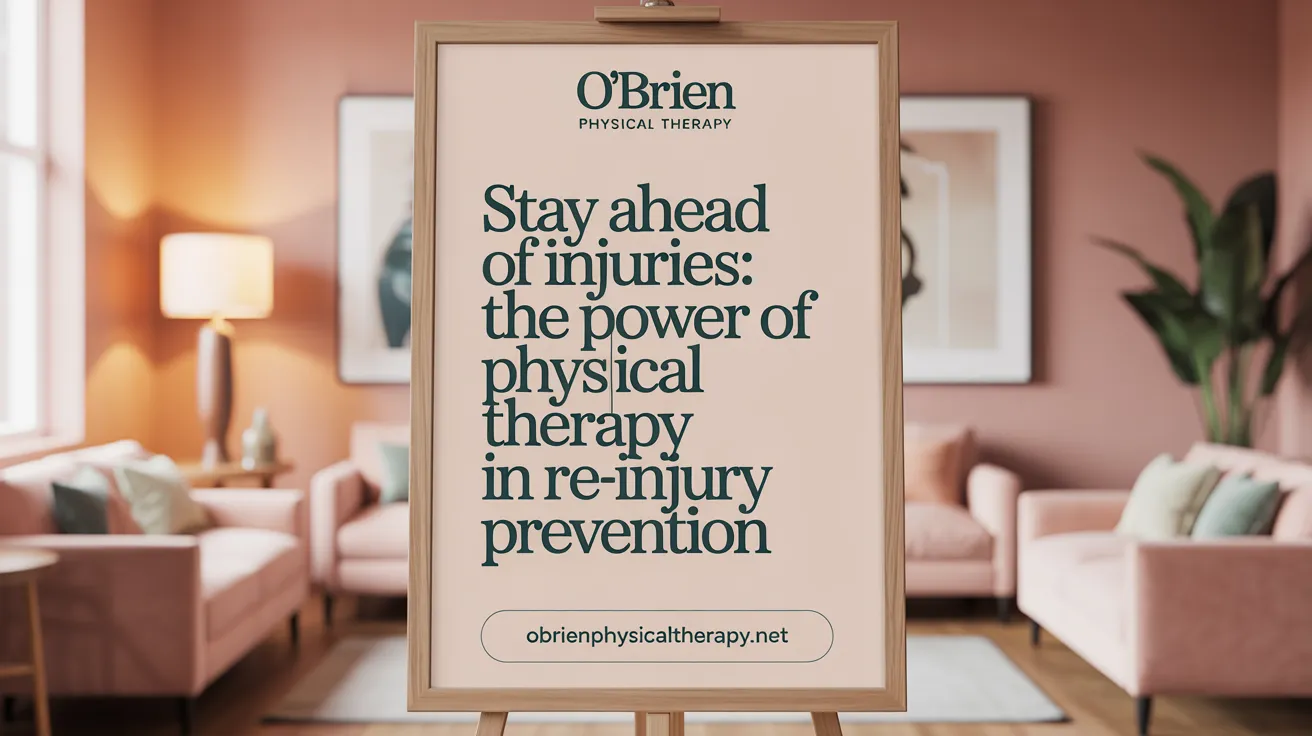
How does physical therapy help athletes prevent re-injury?
Physical therapy plays a crucial role in keeping athletes healthy and resilient. It achieves this through a combination of strengthening muscles, improving flexibility, and correcting faulty movement patterns.
A major aspect involves creating personalized injury prevention programs tailored to each athlete's specific needs. These programs focus on identifying weak spots or imbalances that could lead to future injuries.
Physical therapists analyze an athlete's biomechanics and movement techniques. By correcting improper form and teaching proper mechanics, they help reduce undue stress on joints and muscles.
Enhancing body mechanics and sport-specific techniques not only assists in recovery but also prepares athletes for the physical demands of their sport. This proactive approach significantly lowers the risk of re-injury.
Risk assessment and education are integral components. Therapists evaluate each athlete's risk factors and provide valuable advice on proper warm-up routines, appropriate equipment, and correct exercise execution.
Through targeted exercises, mobility drills, and functional training, physical therapy improves overall strength and resilience. This boosts the athlete’s capacity to withstand the stresses of their sport.
In summary, by focusing on strength, flexibility, technique correction, and education, physical therapy helps athletes recover fully and build a stronger foundation to prevent future injuries. This integrated approach ensures athletes can perform at their best while minimizing injury risks.
Comprehensive Role of Physical Therapy in Injury Management and Rehabilitation
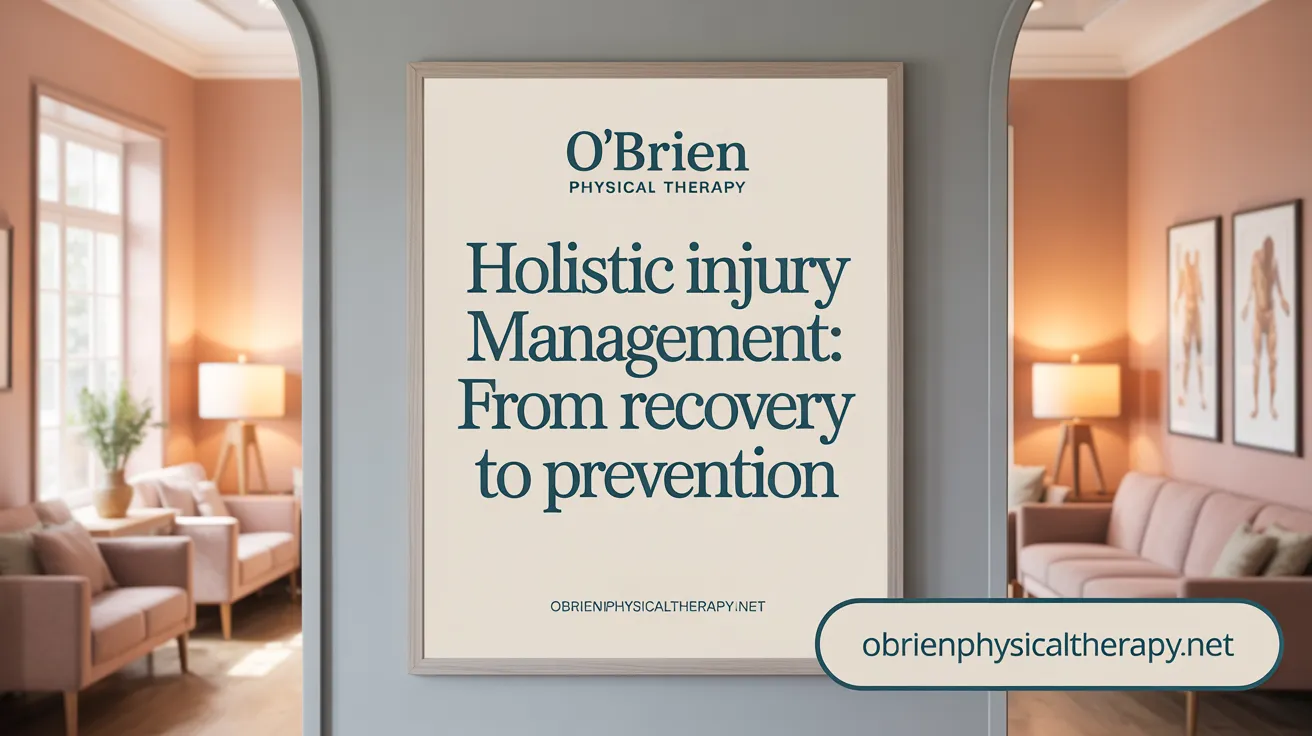
What role does physical therapy play in injury prevention, management, and rehabilitation for athletes?
Physical therapy is essential in helping athletes recover from injuries and avoid future problems. It provides personalized treatment plans based on each individual's specific injury, movement patterns, and goals. Therapists assess how athletes move and identify possible causes of injury, such as poor technique or muscle imbalances.
Throughout the recovery process, physical therapists use various techniques including manual therapy, therapeutic exercises, and specialized modalities like ultrasound and electrical stimulation. These techniques help reduce pain, decrease inflammation, and promote tissue healing.
Rehabilitation involves several stages—initial assessment, acute care, subacute reconditioning, and functional return to sport. Therapists design progressive programs that gradually increase activity, restore strength and flexibility, and ensure safe reintroduction of sport-specific skills.
Prevention is a major focus, with strategies like core strengthening, mobility exercises, and education on proper movement mechanics. Using preventive programs, athletes learn how to avoid overuse injuries and re-injury.
Physical therapy also emphasizes mental readiness, helping athletes regain confidence. This holistic approach ensures a quicker recovery, enhances performance, and reduces the risk of future injuries.
In summary, physical therapy supports athletes by managing existing injuries, optimizing recovery, and implementing prevention methods—making it a cornerstone of sports injury care.
Techniques and Strategies Used in Sports Physical Therapy to Prevent Injury Recurrence
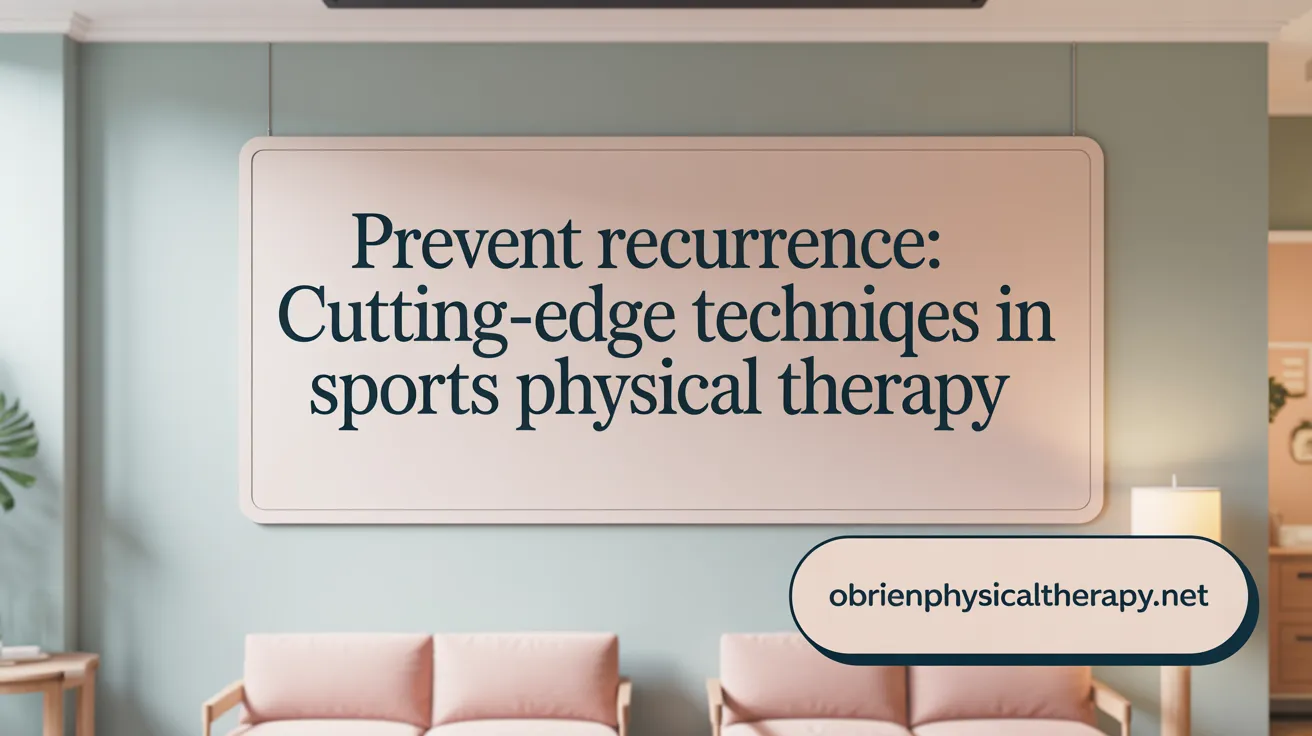
What techniques and methods are used in sports physical therapy to prevent injury recurrence?
In sports physical therapy, preventing the return of injuries involves several targeted strategies. One fundamental approach is implementing tailored strength and conditioning programs. These programs focus on enhancing muscle stability and supporting joints, which are critical for reducing vulnerability to injury.
Proper biomechanics are essential. Therapists analyze athletes’ movement patterns through biomechanical assessments and correct any inefficient or risky techniques. This correction helps minimize undue stress on muscles and joints during sports activities.
Proprioception and neuromuscular retraining exercises are also vital. These exercises improve coordination, muscle response, and balance, enabling athletes to react properly during dynamic movements. Enhanced neuromuscular control helps prevent awkward or improper movements that could lead to re-injury.
Warm-up, cool-down, and recovery routines are emphasized in injury prevention. Proper warm-up increases blood flow and prepares muscles for activity, while cool-down and recovery practices, such as stretching and hydration, support muscle repair and reduce overuse injuries.
Choosing the right protective equipment, including appropriate footwear and sport-specific gear, plays a significant role in injury prevention. Additionally, sport-specific training ensures athletes develop the skills and muscle memory necessary for safe participation.
All these techniques are incorporated into personalized rehabilitation and training plans. This comprehensive approach not only helps athletes recover but also aims to maintain their health, optimize performance, and significantly decrease the risk of recurring injuries.
Optimizing Athletic Performance Through Injury Prevention and Education
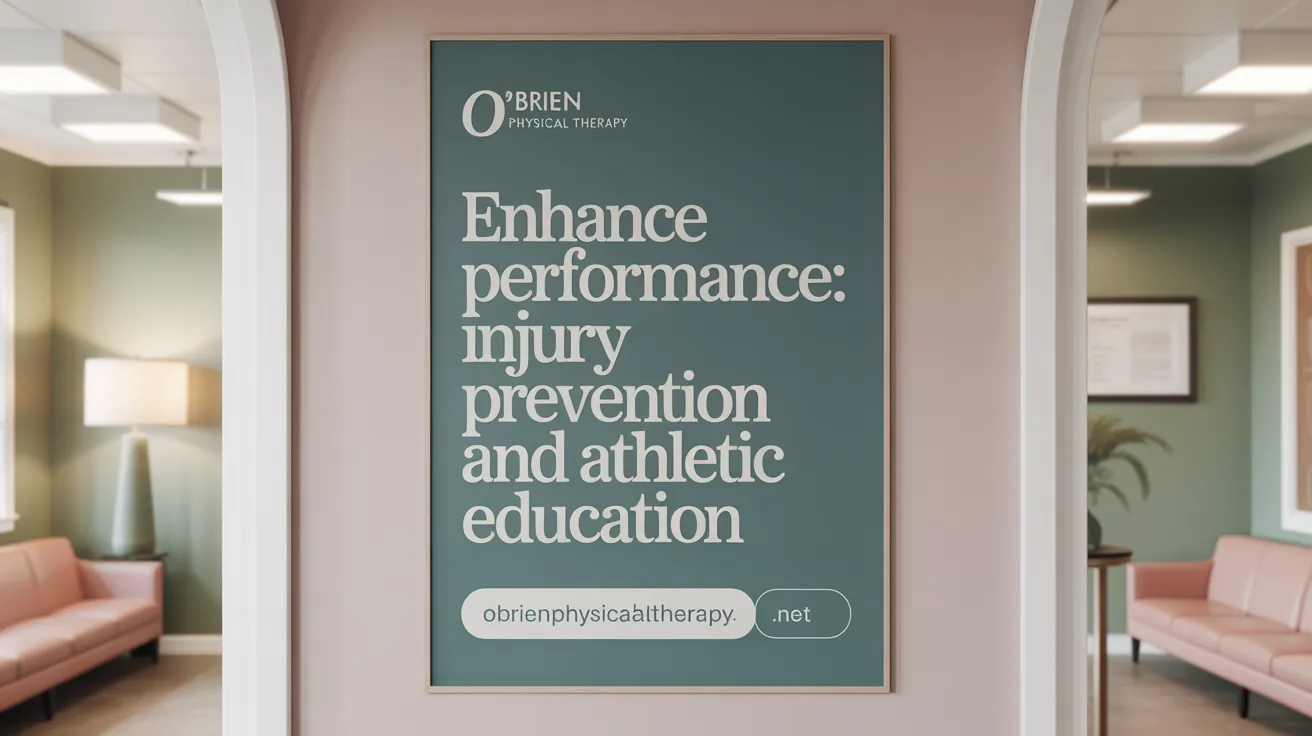
How can physical therapy optimize athletic performance through injury prevention strategies?
Physical therapy plays a vital role in enhancing athletic performance by using a variety of injury prevention techniques. Therapists carry out detailed biomechanical assessments to pinpoint movement issues or imbalances that could lead to injuries. They then develop tailored correction programs that include strengthening weak muscles, improving joint mobility, and refining movement patterns.
In addition, neuromuscular control exercises—like balance and proprioception training—help athletes maintain better control during dynamic activities. Sport-specific conditioning, such as resistance drills matching the demands of the athlete’s sport, prepares muscles and joints for competition. Load management practices—gradually increasing training intensity and volume—also reduce overuse injuries.
Therapists incorporate evidence-based routines like the FIFA 11+ warm-up, eccentric exercises like Nordic hamstring curls, and functional drills designed to improve efficiency and resilience. Manual therapy and mobility work help correct biomechanical faults, ensuring proper technique. Emphasizing proper recovery, including stretching, hydration, and rest, further supports injury prevention.
By integrating these strategies, athletes can perform at higher levels with fewer setbacks. Consistent risk assessment and personalized programs rooted in research enable them to stay healthier, stronger, and more prepared for peak performance.
How does education on injury prevention techniques and best practices contribute to sports physical therapy?
Education forms a cornerstone of effective sports physical therapy by empowering athletes with knowledge about injury risks and prevention methods. Through targeted information sessions, athletes learn to identify factors like poor biomechanics, overtraining, and improper warm-up routines that can predispose them to injury.
Physical therapists teach proper techniques for movement, exercises, and equipment use, which reduces undue stress on muscles and joints. They also identify individual weaknesses or imbalances and develop personalized training programs to correct these issues, thereby decreasing injury likelihood.
Furthermore, athletes are educated on early warning signs of injury, enabling prompt self-management or timely consultation. Practical advice on recovery strategies—such as optimal rest periods, hydration, and stretching—helps prevent recurrence.
This focused knowledge transfer benefits athletes by promoting long-term health and enhancing performance. It fosters a proactive approach to injury prevention, making them less dependent on reactive treatments and more on maintaining peak condition.
| Aspect | Details | Benefits |
|---|---|---|
| Biomechanical assessment | Static and dynamic analysis of movement | Corrects faults, improves efficiency |
| Neuromuscular control | Balance, proprioception exercises | Reduces instability, fall risk |
| Sport-specific conditioning | Tailored resistance and mobility drills | Enhances sport performance |
| Education on technique | Proper warm-up, cool-down, equipment use | Minimizes injury risk |
| Recovery education | Hydration, sleep, gradual return to activity | Prevents overuse and recurrence |
Fostering understanding through education ensures that athletes not only recover from injuries but also stay healthy, active, and optimally performing in their respective sports.
Success Stories and Evidence Supporting Physical Therapy for Preventing Re-Injury
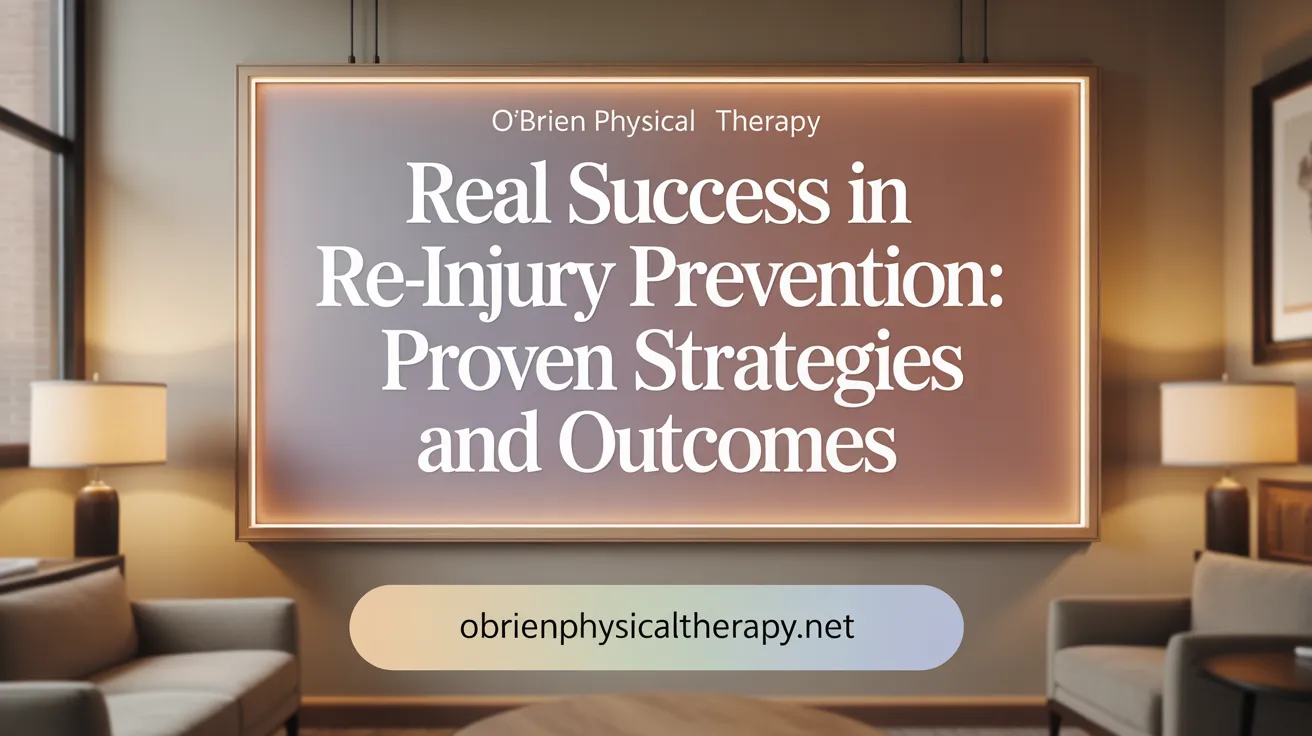 Physical therapy has repeatedly demonstrated positive outcomes in preventing re-injury among athletes through detailed case studies and success stories.
Physical therapy has repeatedly demonstrated positive outcomes in preventing re-injury among athletes through detailed case studies and success stories.
One notable example involves rehabilitation programs for athletes recovering from ACL tears. These programs combine strengthening exercises, balance training, and sport-specific drills, which collectively contribute to a significant decrease in the chance of re-injury. Athletes who follow these personalized protocols typically return to their sports with increased confidence and lower risk of future injuries.
In addition to physical techniques, psychological support plays a vital role. Education about injury mechanics and gradual exposure to feared movements often help athletes rebuild confidence and adhere more effectively to prevention measures. This mental component enhances motivation and reduces fear of reinjury, which is crucial for long-term recovery.
Furthermore, long-term conditioning and injury prevention programs devised by physical therapists focus on identifying individual risk factors. Regular exercises to improve muscle strength, mobility, and balance help maintain joint stability and function, diminishing the likelihood of recurring injuries.
The overall success stories underscore that personalized therapy—integrating tailored exercises, biomechanical assessments, and mental health strategies—can deliver sustainable injury prevention for athletes at all levels.
| Success Area | Outcome | Additional Details |
|---|---|---|
| ACL injury rehab programs | Reduced recurrence of injury | Sport-specific, strength, and balance training |
| Psychological interventions | Increased confidence and adherence | Education and graded exposure |
| Long-term conditioning | Sustained injury resistance | Customized exercise and prevention plans |
| Personalized care and education | Lower re-injury rates | Based on athletes' specific needs |
These narratives highlight the demonstrable benefits of comprehensive, personalized physical therapy in safeguarding athletes’ future health and sports performance.
Physical Therapy: A Foundation for Athletic Longevity and Safety
Physical therapy stands as a cornerstone in both the recovery and prevention of sports injuries. By combining tailored rehabilitation, injury prevention strategies, education, and psychological support, physical therapy empowers athletes to not only heal but also enhance their performance and resilience. The evidence strongly supports its role in reducing the risk of re-injury, enabling athletes to maintain longer, healthier careers. Integrating physical therapy practices into athletic training regimes is essential for anyone committed to optimal sports performance and long-term physical well-being.
References
- The Key Benefits of Physical Therapy for Athletes
- Preventing Common Sports Injuries with Physical Therapy
- Performance Physical Therapy is Sports ...
- What Is Sports Physical Therapy?
- The Role of Physical Therapy in Sports Injury Rehabilitation
- How Physical Therapy Speeds Up Sports Injury Recovery
- Sports Injury Prevention with Physical Therapy
- The Role of Physical Therapy in Recovery from Sports Injuries
